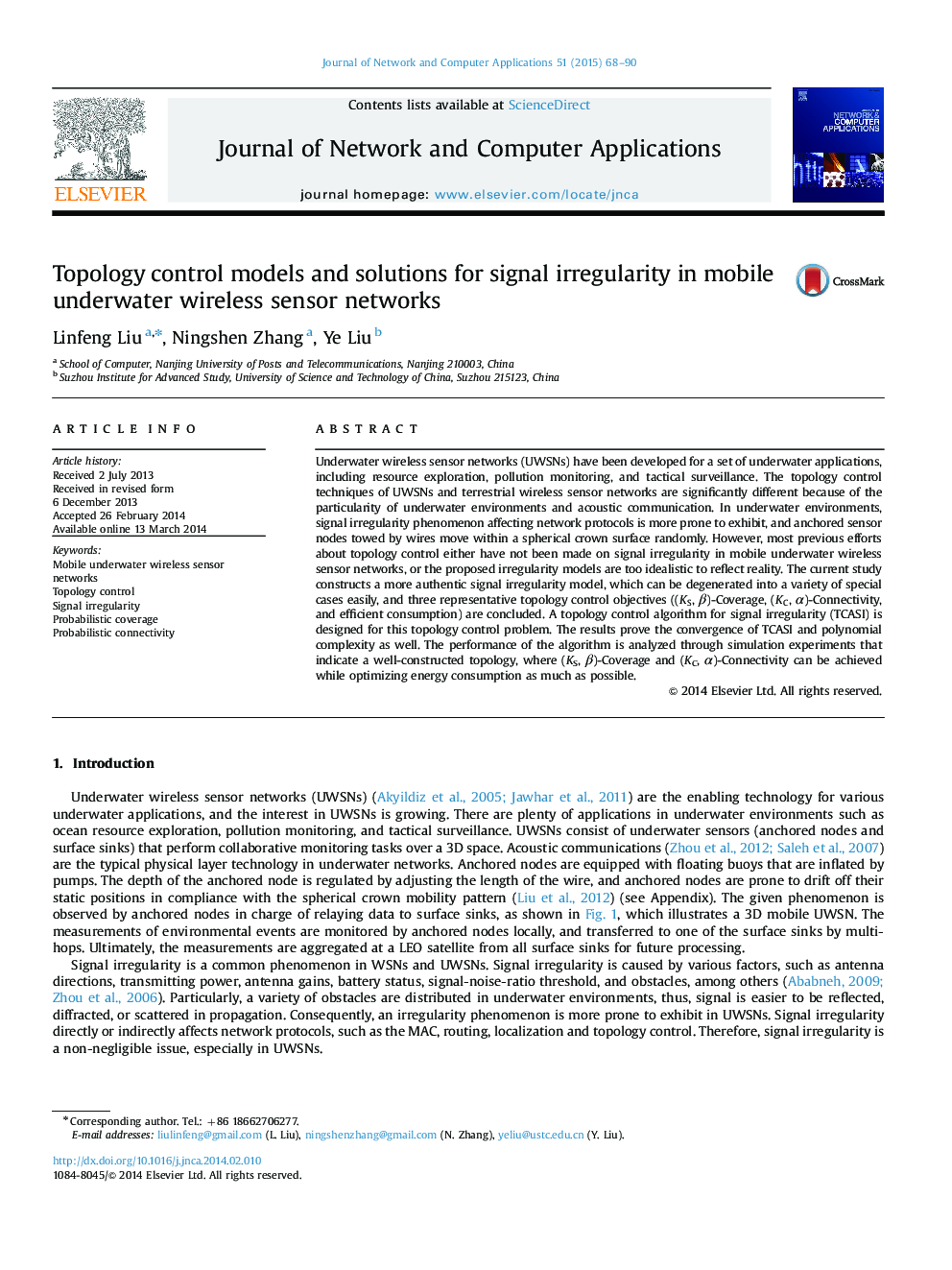| Article ID | Journal | Published Year | Pages | File Type |
|---|---|---|---|---|
| 457107 | Journal of Network and Computer Applications | 2015 | 23 Pages |
Underwater wireless sensor networks (UWSNs) have been developed for a set of underwater applications, including resource exploration, pollution monitoring, and tactical surveillance. The topology control techniques of UWSNs and terrestrial wireless sensor networks are significantly different because of the particularity of underwater environments and acoustic communication. In underwater environments, signal irregularity phenomenon affecting network protocols is more prone to exhibit, and anchored sensor nodes towed by wires move within a spherical crown surface randomly. However, most previous efforts about topology control either have not been made on signal irregularity in mobile underwater wireless sensor networks, or the proposed irregularity models are too idealistic to reflect reality. The current study constructs a more authentic signal irregularity model, which can be degenerated into a variety of special cases easily, and three representative topology control objectives ((KSKS, β )-Coverage, (KCKC, α)-Connectivity, and efficient consumption) are concluded. A topology control algorithm for signal irregularity (TCASI) is designed for this topology control problem. The results prove the convergence of TCASI and polynomial complexity as well. The performance of the algorithm is analyzed through simulation experiments that indicate a well-constructed topology, where (KS, β)-Coverage and (KC, α)-Connectivity can be achieved while optimizing energy consumption as much as possible.
